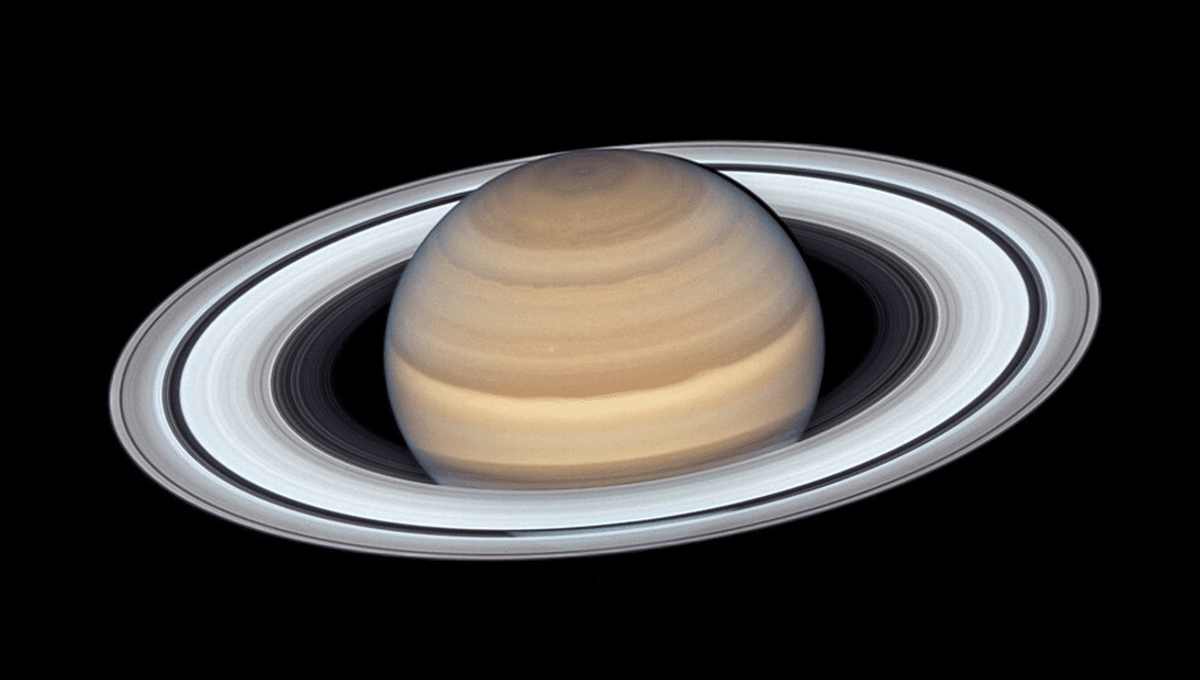
Saturn is one of the nicer objects to gawp at when you have access to a telescope or binoculars, being large enough to get a good look at, and having a pleasing ring structure around it. In early 2025, you will get a chance to have an even more unusual view: Saturn, without its rings obscuring it.
Saturn will not have its distinctive rings forever. When NASA’s Voyager probe first flew past the gas giant, scientists learned that the ice, dust, and rock making up the rings is slowly falling towards the planet. Estimating how much time they have left, one study suggested they may have as little as 300 million years before they are gone completely.
“We are lucky to be around to see Saturn’s ring system, which appears to be in the middle of its lifetime,” James O’Donoghue of NASA’s Goddard Space Flight Center explained in a statement. “However, if rings are temporary, perhaps we just missed out on seeing giant ring systems of Jupiter, Uranus and Neptune, which have only thin ringlets today.”
In 2025, you will get a sort of preview of that far-distant future, when the gas giant’s rings are side-on, from Earth’s perspective.
“Just like Earth, Saturn experiences seasons, but more than 29 times longer than ours. Where Earth’s equator is tilted by 23.5 degrees, Saturn’s equator has a 26.7 degree tilt,” Jonti Horner, Professor of Astrophysics at the University of Southern Queensland, explained in an article for The Conversation. “The result? As Saturn moves through its 29.4-year orbit around our star, it also appears to nod up and down as seen from both Earth and the Sun.”
While the rings spread out over a huge distance of about 280,000 kilometers (174,000 miles), they are incredibly thin, measuring just tens of meters thick. The result is that from Earth, we can see the rings clearly from our vantage point most of the time. But when Saturn is at just the right angle from Earth that the rings are side on, they “disappear” from our viewpoint.
This view happens every 13.7 to 15.7 years, with the next side-on view taking place on March 23, 2025. After that, we will begin to see the underside of Saturn’s rings and its south pole, another view we have not had for many years.
Source Link: You Will Soon Get A Chance To See Saturn Without Its Glorious Rings